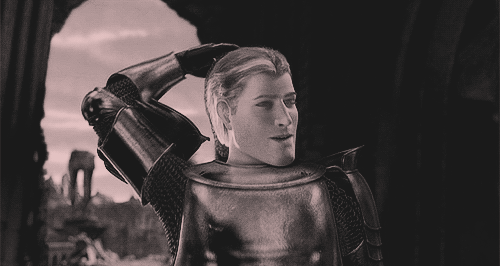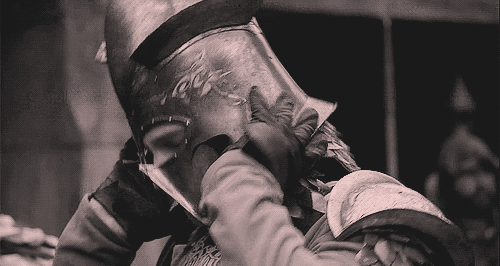Did “Game of Thrones” whitewash Oberyn Martell? by Hera Syed
Today, news broke that Game of Thrones finally cast Oberyn Martell, a highly anticipated character from the books whose nickname is “The Red Viper.” Pedro Pascal, a Chilean actor who attended Orange County High School of the Arts and is currently playing a recurring character on USA’s Graceland, won the coveted role.
Showrunners David Benioff and Dan Weiss said of the role:
The Red Viper is sexy and charming, yet believably dangerous; intensely likable, yet driven by hate… We found a fellow who can handle the job description and make it seem effortless. He wasn’t easy to find and he won’t be easy to stop. [Entertainment Weekly]
Okay, acting ability (or non-ability, since Pascal has yet to prove himself) aside, why am I so upset about this casting?
For starters, A Storm of Swords, the third book in the “A Song of Ice and Fire” saga, is explicitly clear in regards to the way people from Dorne – the region in Westeros where House Martell is from – look. As told from Tyrion’s point-of-view:
The salty Dornishmen were lithe and dark, with smooth olive skin and long black hair streaming in the wind. The sandy Dornishmen were even darker, their faces burned brown by the hot Dornish sun. They wound long bright scarfs around their helms to ward off sunstroke. The stony Dornishmen were biggest and fairest, sons of the Andals and the First Men, brown-haired or blond, with faces that freckled or burned in the sun instead of browning. [A Storm of Swords, p. 520]
From this passage, we can assume that Dorne is a multi-racial region, consisting of people who are both light-skinned and dark-skinned. The following excerpt describes where Oberyn Martell lies on the color spectrum:
The princeling removed his helm. Beneath, his face was lined and saturine, with thin arched brows above large eyes as black and shiny as pools of coal oil. Only a few streaks of silver marred the lustrous black hair that receded brown his brow in a widow’s peak as sharply pointed as his noise. A salty Dornishmen for certain. [A Storm of Swords, p. 521]
As described in this passage, Oberyn Martell is dark and olive-skinned. Even George R. R. Martin has stated before that Nymeria Sand, one of Oberyn’s bastard daughters, looks like Janina Gavankar, an actress of Indian and Dutch descent who has a fairly olive-skinned complexion. So the author himself doesn’t see House Martell being white or light-skinned (with possibly one or two exceptions).
Appearance-wise, Pedro Pascal does not fit the criteria of a “salty Dornishmen.”
Here are a few, common reactions I’ve been reading on the Internet so far:
1. He’s Chilean! That means he’s not white… right?
Actually, no. There are white Hispanics and white Latinos with predominately European features who do exist, which means people from South America can be white and light-skinned. Just turn on any Spanish-language telenovela and you’ll see the over-representation of white Latinos. It’s both disingenuous and extremely troubling to cast a white Latino in a role and then try to pass it off as groundbreaking, non-white casting.
Other white Latino actors include Cameron Diaz, Martin Sheen, and Alexis Bledel.
2. Skin color doesn’t matter!!!
This is a common argument made in any discussion of race.
First of all, pointing out Oberyn Martell’s whitewashing in Game of Thrones is not the same thing as complaining about Idris Elba being cast as Heimdall in the Thor movies, for example. Unless it’s to show them as thugs, violent criminals, and the like, POC representation in media is few and far between, whereas white people have been over-represented in the media. The few roles that are available to actors of color are often passed over to white and lighter-skinned actors, instead, as is the case with Oberyn Martell.
Second, all of the major characters in Game of Thrones have been white, except for slaves, slavers, and savages. This is especially disturbing in light of the white savior fiasco involving the character of Daenerys Targaryen that’s been going on since season 1. (This came to a head in the season 3 finale where she’s hoisted up by a sea of brown people calling her “mother.”

Not only is POC representation few and far between, but the few POC that do exist on this show have been put into subservient roles, killed, or erased completely.
3. He was the best actor for the role.
The idea that talented actors of color don’t exist is absurd.
There’s also this (clips no longer available) handy dandy clip of Pedro Pascal during an audition, so judge for yourself.
4. Use make-up to darken his skin.
I’m not kidding when I say that some people have suggested this as a serious option. If you know anything about the problematic history of attempting to make white actors look “more ethnic” (see: blackface, yellowface, brownface), then this would never even cross your mind.
So, what does this mean for future casting?Pedro Pascal’s pale complexion probably means that the rest of House Martell will also consist of pale-skinned actors, which means even more whitewashing. At this point, I would not be surprised.
I’m curious as to what George R. R. Martin thinks of the casting. His books aren’t exactly ripe with people of color and there are plenty of problematic elements in regard to race and ethnicity (see: Dothraki), but House Martell was one of the few, definitive opportunities to cast actors of color and not have Game of Thrones consist entirely of lily-white British actors.







